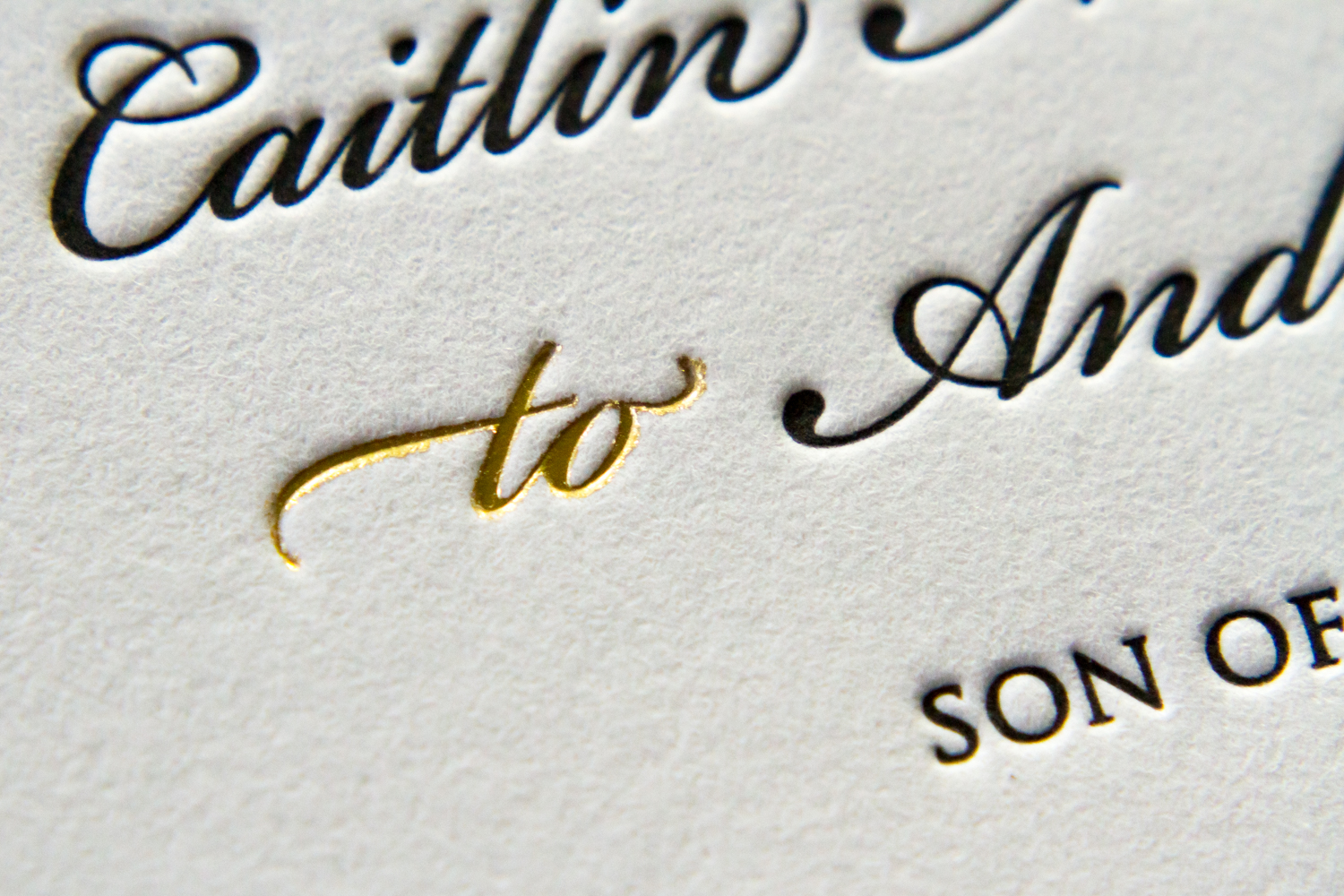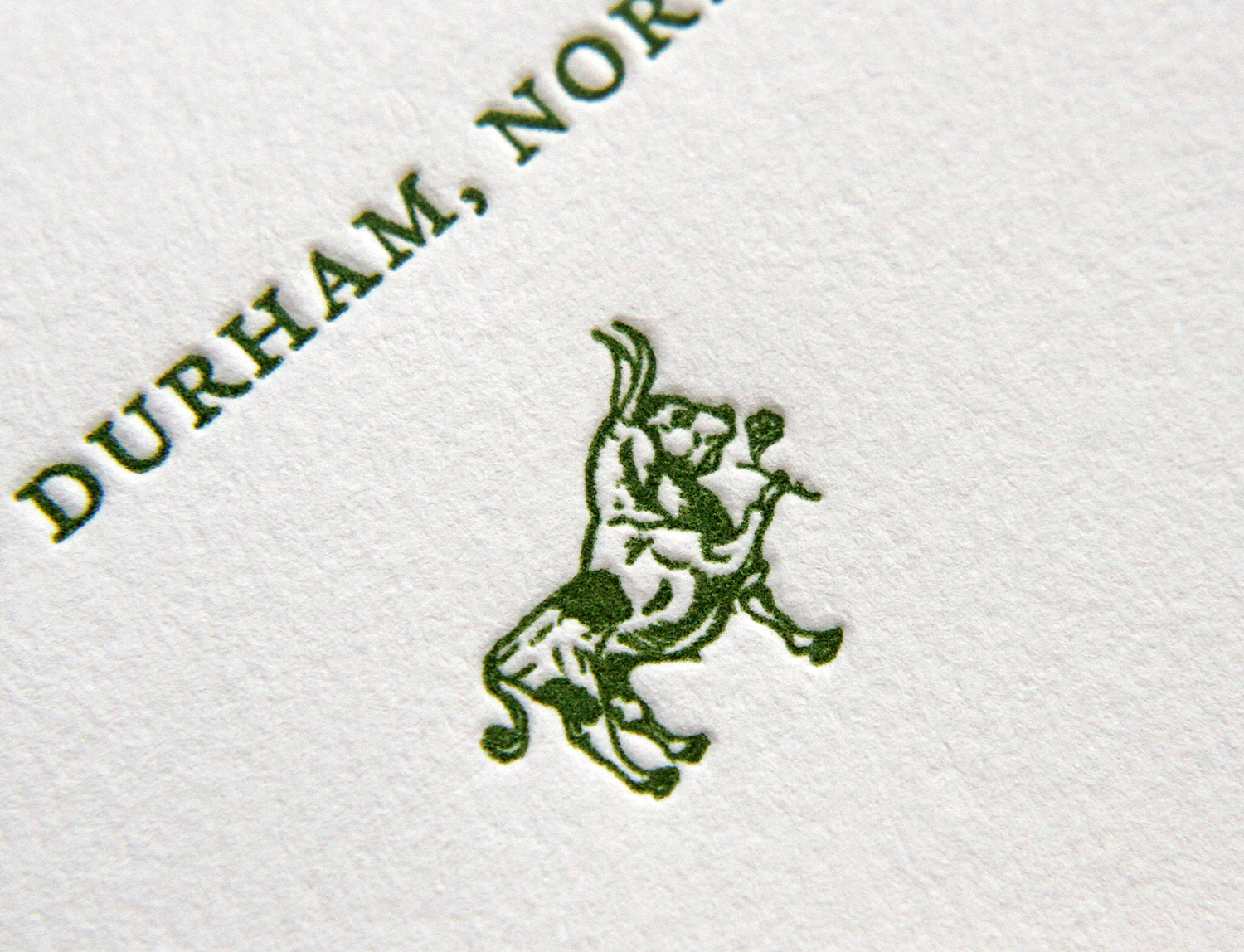Here's a set we did which shows off new technique. (Well, new to this blog … the technique itself is hundreds of years old.) Overall, it's sort of a modified combination of elements from Whirl and Vignette, with a custom, gold-foil-stamped art element. This set included an RSVP card with printed return address envelopes, and — as a nice additional piece — corresponding note cards for the couple's thank you notes.
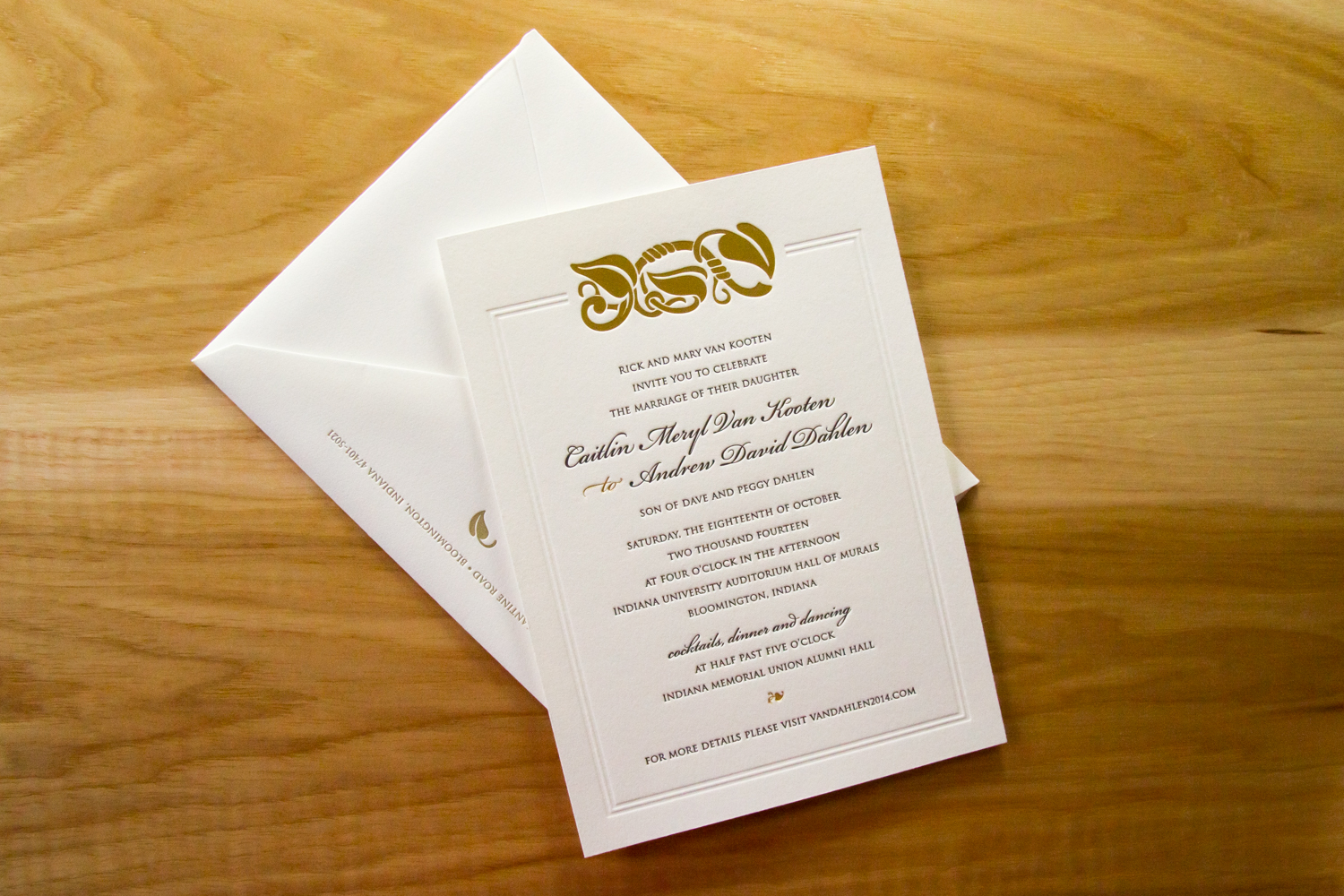
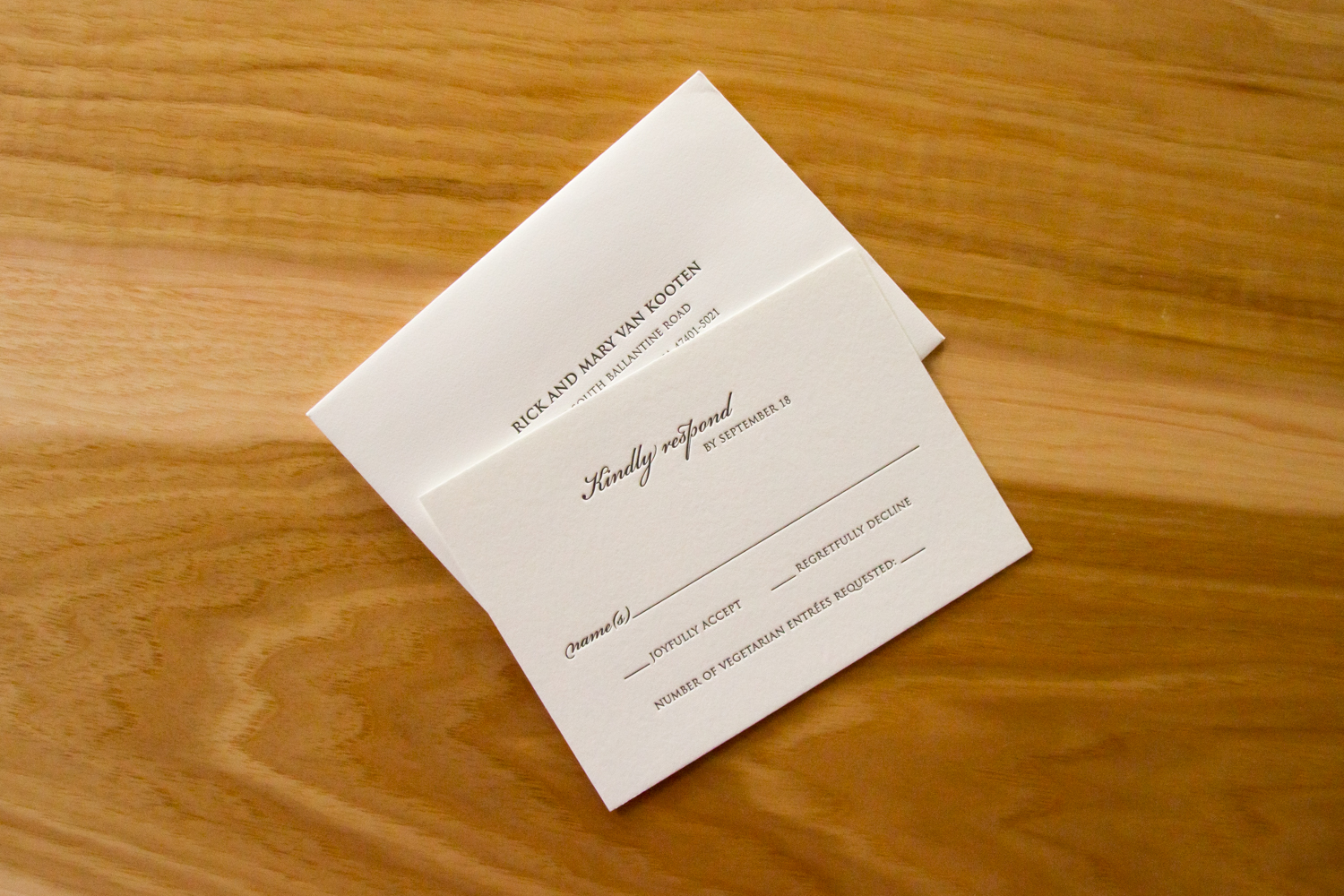
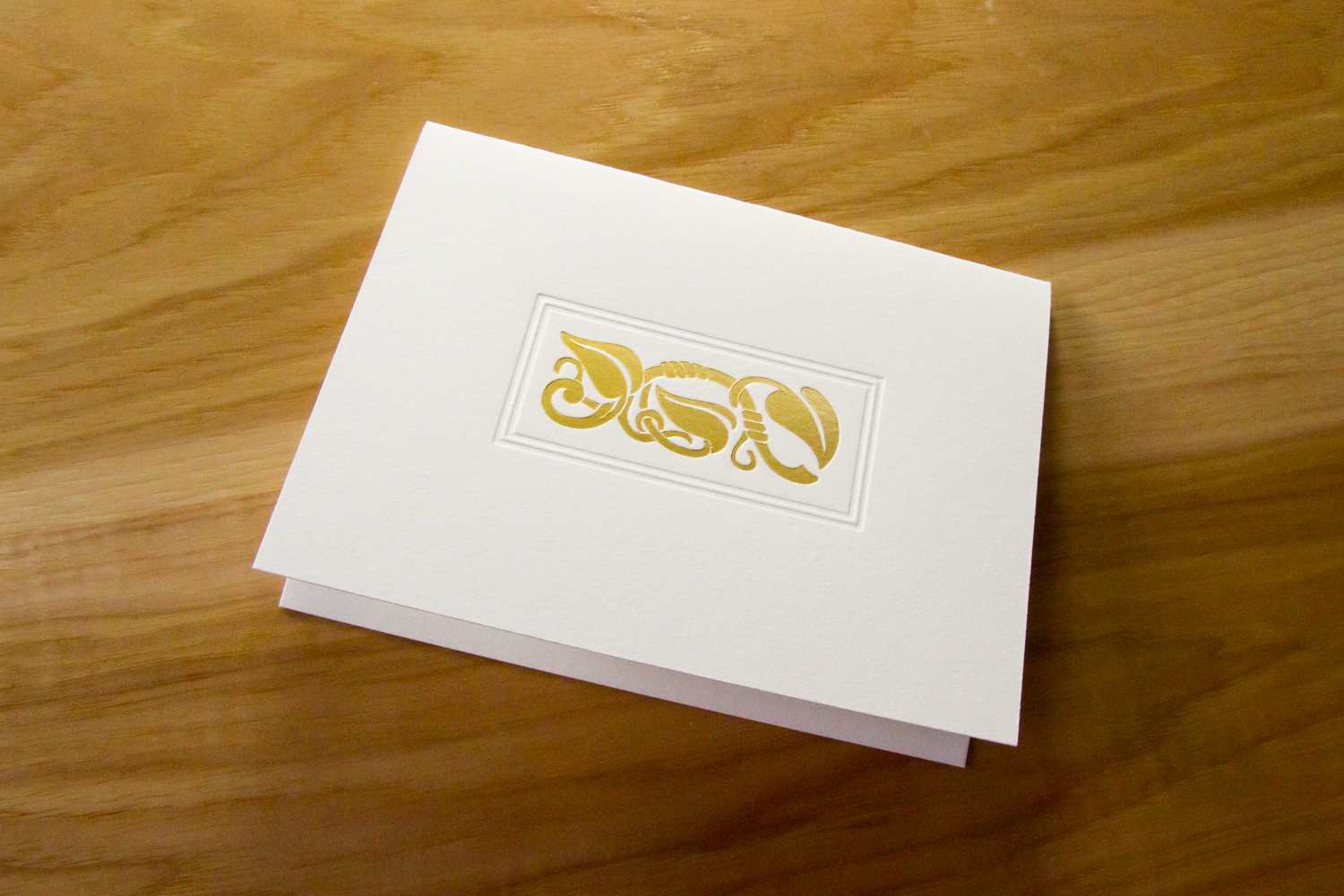
The custom art motif was inspired by an architectural detail from the wedding venue: a brass inset from a handrail, depicting a golden tumble of leaves, stems and vines. Pretty sweet likeness, huh? The artwork is a perfect re-creation, but to really connect it to the brass original — to make it pop and shine — foil stamping was used throughout the set.
Foil stamping goes back to European Monks in the Middle Ages, but it was possibly inspired by the gold leafing techniques of ancient Egypt. It's a heat-transfer process: an impression is made, pressing metallic foil to the paper surface, and foil is left behind in the impressed design or bits of type. It's a separate process from letterpress (which doesn't apply heat, just pressure and usually pigment), and it creates a look you can't get with ink.
Below is a closer look, showing how the foil reflects light.
Of course, there are pros and cons to foil stamping, so it's best to use the process thoughtfully. As we've mentioned, it gives a shiny, mirrored look. (Yes, metallic ink is an option — but it usually looks only just slightly metallic when printed on cotton paper.) And because stamped foil is opaque, it can be printed on dark backgrounds; it will appear high in contrast, instead of taking on some of the paper's tone and blending in, as ink would to some degree.
Onto the (yes, inevitable) disadvantages: first, it's more expensive than ink. Not all letterpress printers do foil stamping themselves, so it has to be sent out, which can extend the turnaround time. And from a technical standpoint, the edges don't print as crisply as using the regular letterpress-and-ink process — so fine detail work isn't as clean.
For this job, however, it was the perfect solution. Above, see how the lovely details of the set are carried throughout: from the custom double border used on the invitation and the thank you card, to the gold foil-stamping used for the the "to" and leaf dingbat, to the leaf motif used with the return address on the envelope flap. (Note the gold ink selected to match the the color of the gold foil accents.)
Letterpress printing with foil stamping, as it's used here, really is something special. And despite the the fact the processes have been around for centuries, most people have probably never seen both techniques used together — nor held in their hands something printed this way. Bits of shiny gold next to crisp, black text on a heavy pearl paper stock: this invitation sets the stage for an elegant, formal wedding.

